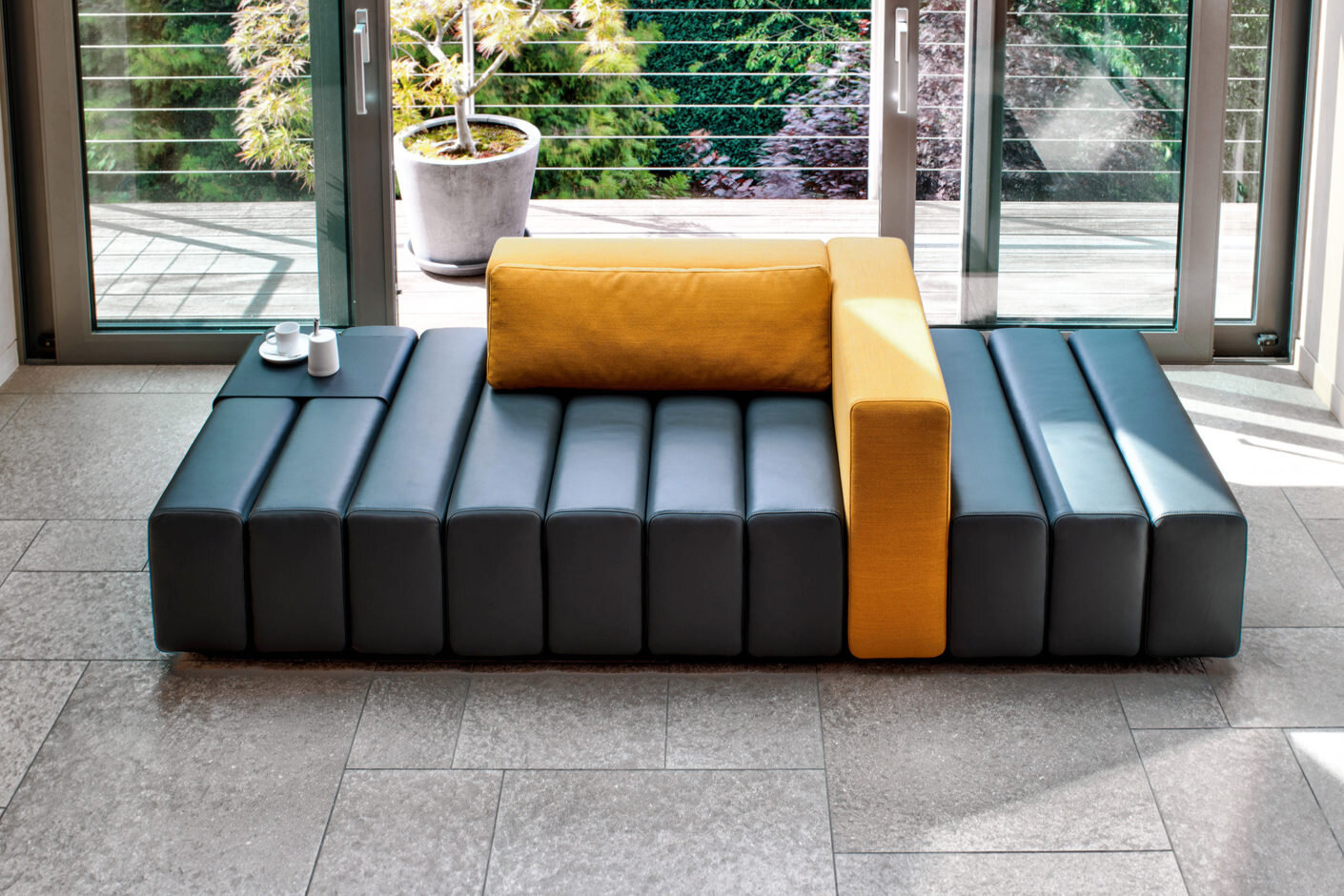Master of metamorphosis
“I never really had any aspirations to become an entrepreneur,” says Volker Reichert, founder and Managing Director of the young furniture firm modul21. The fact that things turned out differently has to do with a brilliant concept for a seating system that he did not want to consign to a drawer where it would just gather dust. Reichert is very familiar with the topic of chairs and the like. For 30 years the industrial designer has been masterminding chairs, armchairs and sofas. Internationally renowned firms like Rolf Benz, Koinor or office furniture specialist Kusch+Co number among his clients. And Reichert has spent years exploring the topic of modular furniture. In the course of his career he has developed numerous upholstery furniture systems for various manufacturers. So, Reichert did not immediately consider producing it himself when he was busy devising the “modul21” system. However, when a potential manufacturer backed out Reichert took a spontaneous decision and presented the prototype at Orgatec 2018 under his own name. The reactions were so overwhelming that the designer decided to move over into the entrepreneurs’ camp.
The idea behind “modul21” was to take a fresh new approach to modularity in the field of upholstery furniture. The design is based on a grid principle that allows standardized individual sections to be assembled and reassembled in ever new configurations. The designer wanted to transfer the idea demonstrated, say, in USM Haller plug-&-play system, to the sofas, armchairs and upholstered benches making up “modul21”. And it was with this concept in mind that the designer began to look for ways to realize his ideas. The main element in the system is a base frame that is used to combine the various other section with one another. Using this frame, it is possible at least in theory to combine an endless number of individual sections with one another. The basic module is a section measuring 20 by 80 centimeters which is 37 centimeters high – although this can be altered simply by adding different feet. Four sections assembled back-to- back produce a spacious stool. And if you combine several of these blocks of four you get a bench. Alternatively, if you replace the rear section with a backrest element you create a sofa. Naturally, the program also includes a variety of side rests. And everything is based on a grid of 20 by 20 centimeters. What’s more, every element is so designed that it can be used differently at some point “Which is why parts of the modules are covered with fabric that you don’t see at all in many configurations,” explains Volker Reichert.




